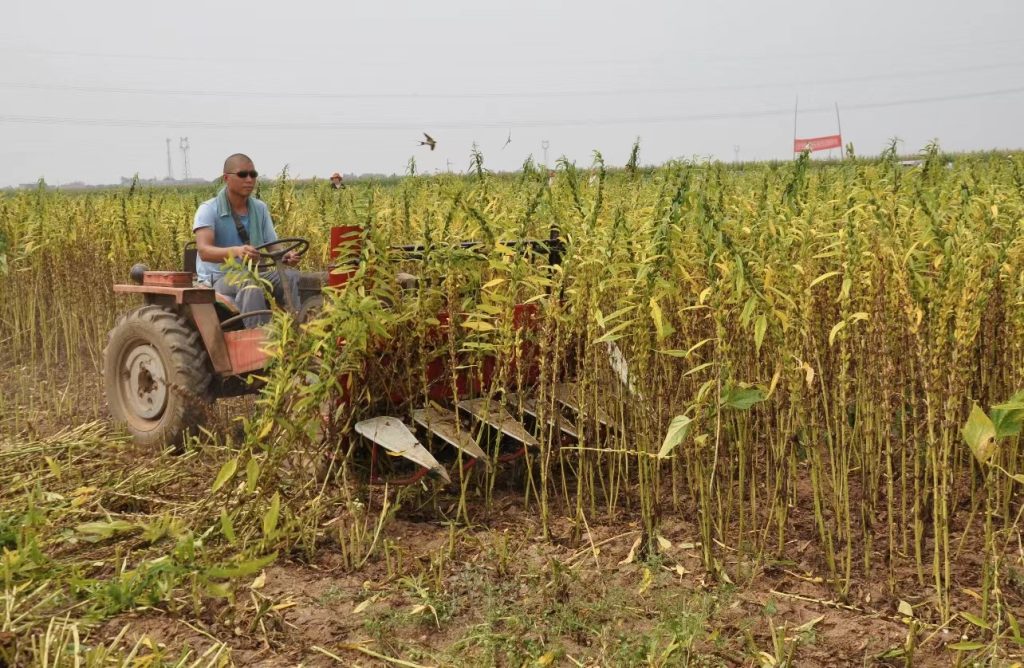HEBEI, 31 October In H1 of current year, Pakistan’s sesame export to China increased by 46%. Sesame experts from China and Pakistan have chosen and exchanged seeds for crop breeding, and future collaboration on sesame planting and harvesting is planned within the framework of CPEC.
“In November, the Ayub Agriculture Research Institute (AARI) in Faisalabad will test the sesame seeds it has chosen in Hai Nan, China. During an online seminar held by China Machinery Engineering Corporation (CMEC) and AARI last month, researchers and farmers from Pakistan provided us with a thorough overview of the prospects for Pakistan’s sesame business. Our institution is confident in its ability to develop new sesame kinds, cultivate technology, and transform our “iron brother” from the lab to the market. According to China Economic Net, Xu Guizhen, Director of Sesame Research Office, Hebei Academy of Agriculture and Forestry research
In Pakistan, sesame has a long history of planting. Despite the crop’s ease of cultivation and little water and fertilizer requirements, farmers still appear reluctant to plant sesame.
The main challenge is hiring workers. Here, planting and harvesting must be done by hand. Mature sesame seeds will fall off the plant if growers are unable to recruit skilled workers to harvest the crop. My sesame seeds have nearly all fallen off this year. “Middle persons hire labor for us, and they take quite a substantial number of shares from the paychecks that we provide,” Pakistani sesame farmer Chaudhary Abdul Razzaq said to China Economic Net.
Not every situation was like Chaudhary’s. Due to low domestic demand, expensive labor, and incorrect planting techniques, farmers used to be wary about sesame planting. These several circumstances have pushed sesame producers to compete for profit abroad. However, without sufficient care, Pakistan’s sesame seeds may struggle in the global market.
“The Pakistani team were particularly interested in mechanical means to harvest sesame seeds during our last meeting.” Xu Guizhen said.

Before they develop, sesame seeds are enclosed in a capsule, and each capsule dehisces at a distinct period. For the seeds to ripen and the capsules to open, farmers have historically cut the crops by hand and put them upright.
“We have effectively created defined inflorescence sesame germplasm, a kind of sesame germplasm. This kind of sesame is disease-resistant and shorter than other varieties. Its capsules may be collected mechanically and typically all bust open at once. said Xu.
“There is another one that we’ve created called ‘dehiscence resistant sesame germplasm’. When this type of sesame crop is ripe, only the tip of the capsule pops, and the sesame seeds stay inside of the capsule, which means it can be harvested completely by mechanical means. The Pakistani team was satisfied with the results.”
Despite being a significant sesame grower, China rarely met the crop’s rising demand on the market. Chinese people, in contrast to Pakistanis, view sesame seeds as a necessary component of every meal.
China will need 1.58 million tonnes of sesame seeds in 2021, and it has already imported 1.18 million tonnes. Chinese traders expressed worries over freight prices. “Due to the benefits of its ports and land links, Pakistan has become an excellent supplier to China under the China-Pakistan Economic Corridor. We are prepared to offer Pakistani farmers technical assistance and market knowledge; this is a chance for both of us. Finally, Xu said.

